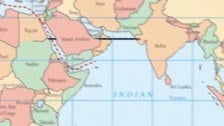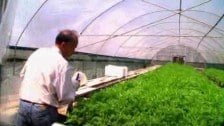Aussie Wasabi
Shima Wasabi is a new company created by four Tasmanian wasabi growers. SkillsOne heads to Launceston, Tasmania, to chat to Stephen Welsh about Wasabi growing, how he got started, the challenges and the successes of growing wasabi, and the business!
Stephen has worked in horticulture for best part of 20 years and wanted to grow a speciality crop. He stumbled across wasabi and found it quite a challenge as it is very difficult to grow.
The Japanese don’t tell people outside Japan how to grow it and it uses completely different techniques to most produce (heat makes things grow quickly, while wasabi needs the opposite).
He has been growing wasabi for 9 years – together, they grow about 300kg per year but are developing the business.
They are the only people in Australia growing wasabi hydroponically. Wasabi is a vegetable plant (similar family to mustard) and looks like brussel sprouts.
It takes 2 years to grow. The stems are the most valuable part of the plant (where the hot green paste is made from) but they also sell leaves and flowers as an edible rare garnish.
The company is about to launch a dry product for home use. The product will be made from leftover plants that don’t make it to the restaurants yet are still good quality – so they are minimising waste. Wasabi has an anti-bacterial agent help to neutralise any bacteria in the food.
About Shima Wasabi:
The word Shima is a translation of the Japanese word for Island, hence Shima Wasabi translates to Island Wasabi. The wasabi is grown in a sophisticated, climate controlled green house, because wasabi is similar to a mould and likes low levels of light – 15% of outside sunlight strength.
The Tasmanian cold climate gives an advantage in growing. They have been growing wasabi individually for several years and saw the need to form Shima Wasabi to be able to offer a complete range of premium quality Australian-grown wasabi products to their growing customer base including restaurants, fine food providores, market agents and wholesalers.
They sell direct to restaurants and catering companies in Australia. It is mainly used for seafood and asian cooking. Chefs say just as good as what as in Japan – excellent quality and flavour.











